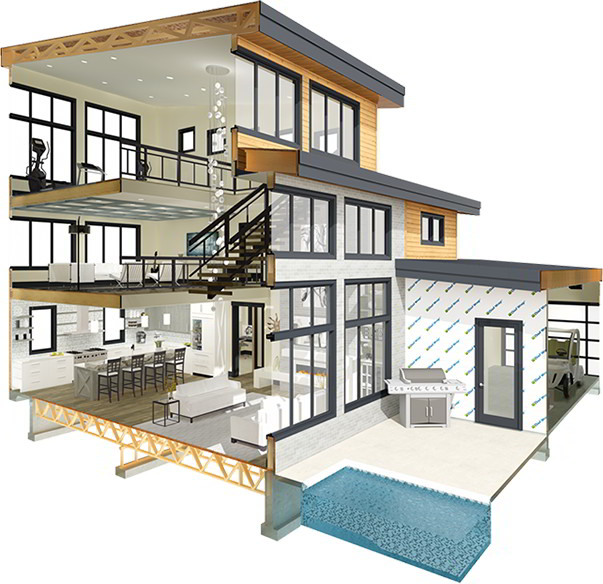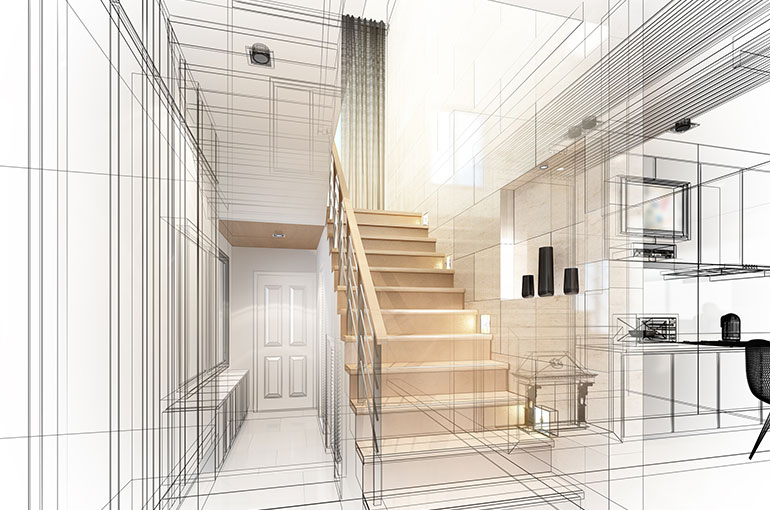Discover Ingenious Layouts with Leading CDA Architects for Your Next Project
Discover Ingenious Layouts with Leading CDA Architects for Your Next Project
Blog Article
Understanding the Collaborative Refine Between Architects and Engineers in Modern Construction Projects
The collaborative procedure between architects and engineers is necessary in contemporary building and construction projects, as it balances layout intent with design feasibility. This partnership not just affects the visual and functional elements of a job but also plays a crucial function in dealing with sustainability obstacles. By employing reliable interaction strategies and leveraging sophisticated innovations, such as Structure Info Modeling (BIM), teams can function extra cohesively. The complexities of this cooperation typically present unique challenges that can prevent progress. Discovering these dynamics reveals insights that might considerably affect job end results and total market criteria. cda architects.
The Relevance of Cooperation
The joint synergy between engineers and engineers is essential for the successful realization of any type of building and construction project. This partnership brings together distinctive proficiency and perspectives, enabling the integration of ingenious design with functional engineering remedies. By interacting, engineers and engineers can guarantee that a job not only satisfies aesthetic and functional needs yet additionally sticks to security, sustainability, and monetary constraints.
Partnership fosters a common vision, assisting in the positioning of goals and expectations from the beginning. This positioning is essential in attending to possible challenges and mitigating threats that can occur throughout the job lifecycle. A collective technique enables for the effective allowance of resources, maximizing both time and expense.
The relevance of cooperation includes the repetitive procedure of design and construction, where comments from engineers can notify architectural decisions, resulting in even more feasible and sustainable layouts. On the other hand, designers can influence designers to believe creatively regarding just how to attain architectural stability without compromising artistic intent. Ultimately, the collective connection in between designers and designers is not just advantageous; it is basic to the creation of premium, useful, and innovative constructed atmospheres that fulfill the needs of culture.
Communication Strategies and Tools
Effective interaction methods and devices are crucial for cultivating collaboration in between engineers and engineers throughout the task lifecycle. Establishing clear channels of communication is vital to make certain that all team participants are lined up with project objectives, timelines, and obligations. Normal meetings, both in-person and virtual, give possibilities for stakeholders to review progression, address problems, and make informed choices.

In addition, adopting collaborative interaction devices, such as Slack or Microsoft Teams, permits instantaneous messaging, file sharing, and recurring conversations, promoting an extra agile reaction to arising issues. Paper monitoring systems additionally play an essential role in arranging task paperwork, guaranteeing that all group members have accessibility to the most current info.
Shared Goals and Task Vision
A merged task vision functions as the structure for effective cooperation between engineers and designers (cda architects). This common vision not only straightens the initiatives of both celebrations yet also develops a common structure for decision-making throughout the job's lifecycle. By verbalizing clear objectives, stakeholders can efficiently browse the complexities of modern building projects, making sure that both aesthetic and functional demands are satisfied
Developing shared objectives involves open dialogue and a detailed understanding like it of each technique's contributions. Architects normally concentrate on style intent, spatial relationships, and customer experience, while engineers stress architectural stability, systems functionality, and compliance with policies. When these viewpoints are straightened, the outcome is a cohesive project that sticks to both innovative goals and technical expediency.
In addition, a well-defined task vision cultivates accountability amongst staff member, motivating each individual to take possession of their function in accomplishing the preferred outcome. Regular check-ins and joint workshops can additionally reinforce this commitment, enabling changes to be made as the job develops. Eventually, a common vision not just enhances team effort however additionally elevates the top quality of the last deliverable, leading to effective task conclusion.
The Role of Innovation
Leveraging innovation has actually ended up being essential in improving cooperation between designers and engineers. The assimilation of sophisticated software program devices promotes real-time communication and information sharing, enabling groups to work much more effectively and effectively. Building Information Modeling (BIM) stands apart as a crucial modern technology, allowing both engineers and designers to produce thorough 3D versions that encapsulate layout intent and structural integrity. This common graph reduces misconceptions and enhances the decision-making process.
In addition, cloud-based systems enable smooth collaboration, enabling job stakeholders to access and update task data from anywhere. This fosters a culture of openness and liability, as adjustments can be tracked and assessed in real-time. Furthermore, mobile applications additional enhance communication, providing on-site groups with immediate accessibility to task specs and updates.
Arising technologies top article such as expert system and artificial intelligence are additionally beginning to contribute in anticipating evaluation, aiding groups determine potential problems before they emerge. Eventually, the role of technology in architecture-engineering cooperation not only enhances operations efficiencies however likewise boosts technology, causing more successful project end results. By accepting these technical innovations, designers and designers can make certain a much more natural and efficient joint process throughout the construction lifecycle.
Case Studies in Successful Collaborations
Countless study illustrate the profound influence of efficient partnerships in between architects and designers on project results. One notable example is the cooperation on the High Line in New York City City, where landscape architects, designers, and city organizers worked with each other to change an abandoned railway right into a vivid public park. This multidisciplinary method not only boosted the aesthetic high quality however additionally ensured architectural safety and environmental sustainability.

The Burj Khalifa in Dubai additionally demonstrates the value of collective initiatives - cda architects. The combination of architecture and design expertise allowed the task click here now team to attain unmatched heights while sticking to safety and security policies and aesthetic vision
These examples highlight the significance of communication, depend on, and shared goals. In today's complex building and construction setting, such partnerships are necessary to navigating challenges and supplying projects that fulfill both practical and visionary objectives.
Conclusion
In verdict, the cooperation in between designers and engineers is crucial for the success of modern construction jobs. Effective communication methods, a shared project vision, and the combination of advanced technologies are important components that facilitate this partnership.
Report this page